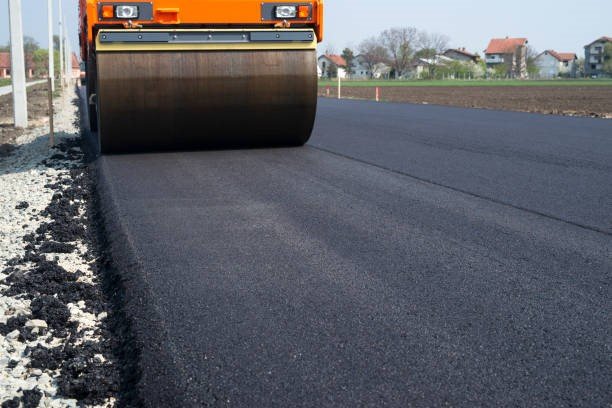If you’re interested in asphalt paving, there are several factors you should know. This article will go over Rollers, Binder courses, the Superpave system, and Geotextiles. These materials are vital to the durability of asphalt pavements. They also contribute to the aesthetic appearance of the finished product. Read on to learn more. Listed below are some of the most common causes of damage to asphalt pavements and how to avoid them.
Rollers
There are many types of rollers used for asphalt paving. Some are heavy, and some are lightweight. They come in a variety of capacities, including tandem rollers. Heavy rollers are typically used to compact crushed stone, asphalt, or even concrete. Other rollers are smooth metal cylinders that have a cam projection that helps compact soil. These types of rollers can handle a wide range of materials, including concrete.
Single-drum rollers are the lightest type, with one drum and a wheel supporting it. Two-axle rollers are medium-duty, while three-axle static rollers are heavy-duty machines that can compact asphalt concrete layers. Some models are driven by hydraulics and can handle a considerable amount of weight. Hydraulic-lowering rollers are more complex and can carry significant loads without compromising speed.
Binder Courses
Asphalt paving uses two layers of materials: the binder and the topcoat. The binder course is the base layer and typically contains up to 3/4″ aggregate, while the topcoat contains 3/8″ aggregate. Binder and topcoat are typically applied at different depths, depending on the traffic load and the purpose of the asphalt pavement. Binder is applied first, then a finish coat is applied to create a durable and aesthetically pleasing surface.
There are several different types of binder courses for asphalt paving. The base course is typically composed of crushed stone or gravel, with a binder course that connects the two layers. These layers are also called sublayers. The base course is made up of several HMA mixes, which typically contain larger aggregates and are subject to less stringent specifications. Binder courses are used to bind crushed stone and prepare the surface for the asphalt layer.
Superpave System
The use of the SUPERPAVE system for asphalt paving can improve highway durability. This system helps highway contractors optimize asphalt pavement designs and improve durability under various conditions. It is a powerful tool that has a high rate of adoption across the country, and its development is supported by TRB and its Superpave Regional Centers. The following are some of the benefits and challenges of using this new system. Read on to learn more about the Superpave System for Asphalt Paving.
The Superpave system is a unique system that integrates mix design and material selection into one cohesive process. The process of compacting the mix is different than traditional methods. A hydraulically-powered gyratory compactor uses constant force to compress the aggregate and provides feedback to the contractor on the degree of compaction. As a result, the resulting mix typically requires less asphalt binder than traditional Marshall methods.
Geotextiles
The use of geotextiles in asphalt paving is not new. The permeable fabric separates, filters, reinforces, and drains soil. Using them in asphalt paving can reduce damage to pavement from water infiltration. A variety of geotextile products are now available. Some contractors choose to mount mounting brackets on loaders and drive over the fabric. For more information on geotextiles, contact a paving expert like Diversified Asphalt.
The Federal Highway Administration has conducted extensive testing and research into the use of geotextiles in asphalt paving projects. The company has also developed a test model for determining the benefits of geotextiles in asphalt paving. MnDOT specifies the placement of strips of 15 to 18 inches wide under transverse joints. In this way, geotextiles are effective for preventing reflective cracking in concrete.
Tests
Many people look to asphalt test reports for information about the quality of the material. These reports may be produced by the owner of a project or by a contractor. They may contain raw data, calculations, and allowable tolerances. If your asphalt is failing, you should know why so you can take action to ensure that the road lasts as long as possible. To determine whether or not your asphalt is acceptable for use, visit the website of the American Society for Testing and Materials (ASTM).
Several types of asphalt testing machines have been developed. Gilson’s Quartermaster Asphalt Sample Divider is an example of such equipment. This device produces representative samples for testing. Other equipment includes Marshall load frames and Superpave gyratory compactors. Loaded-wheel trackers are used to determine rutting resistance of asphalt under high axle loads. Another type of asphalt test machine is called an asphalt content furnace. These machines measure the amount of asphalt binder in asphalt mixes. A series of binder testing tests are also required to determine the properties of asphalt binder. The tests define the viscosity of asphalt, its ductility, its stiffness, and its permeability.
















